The facial recognition world map

Over the last 10 years, the use of facial recognition technology in surveillance has become more and more common around the world. Computer programs that analyze images of human faces to identify them are used to pick out criminals, and can even find lost children in a matter of seconds.
In total, there are now 109 countries today that are either using or have approved the use of facial recognition technology for surveillance purposes. But at what cost? The spread of this technology around the world has raised important questions about the impacts on privacy of such widespread surveillance.
While the public use of facial recognition technology has been declared illegal by only one country to date -- Belgium found a pilot project using facial recognition technology at an airport to be in breach of federal law in 2019 -- many national governments and their citizens are in the midst of a global debate over the ethics and legality of mass surveillance.
To get a better idea of the current state of facial recognition surveillance around the world, we compiled data on the status of facial recognition technology in 194 countries. Countries were assigned one of five statuses depending on how they have adopted facial recognition technology -- in use, approved for use (not implemented), considering technology, banned, or no evidence of use.
So let‘s look at the state of surveillance around the continents.
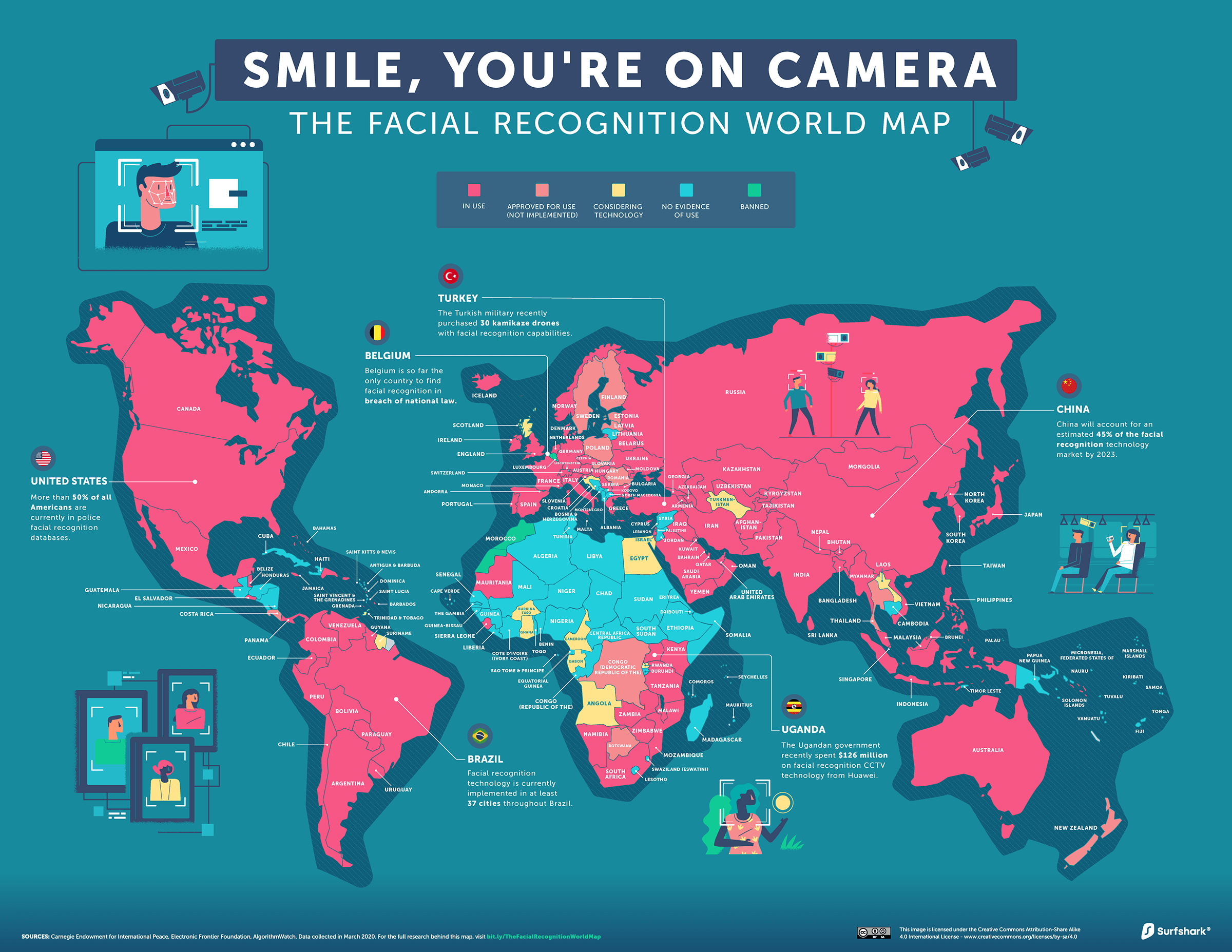
Europe
Facial recognition technology is currently in use or has been approved for use in 32 countries in Europe. London police deployed a series of facial recognition CCTV cameras throughout the city in January 2020, and made their first arrest using the technology on February 27. German police currently use technology and have plans to install facial recognition cameras in 134 trains stations and 14 airports. In the Czech Republic, facial recognition cameras have led to at least 160 arrests at Prague Airport since mid-2018.
Like in much of the Western world, the use of facial recognition for surveillance in Europe has been met with substantial backlash. France and Sweden recently banned the use of facial recognition in schools. In 2019, Belgium found a pilot project using facial recognition technology at an airport to be in breach of federal law.
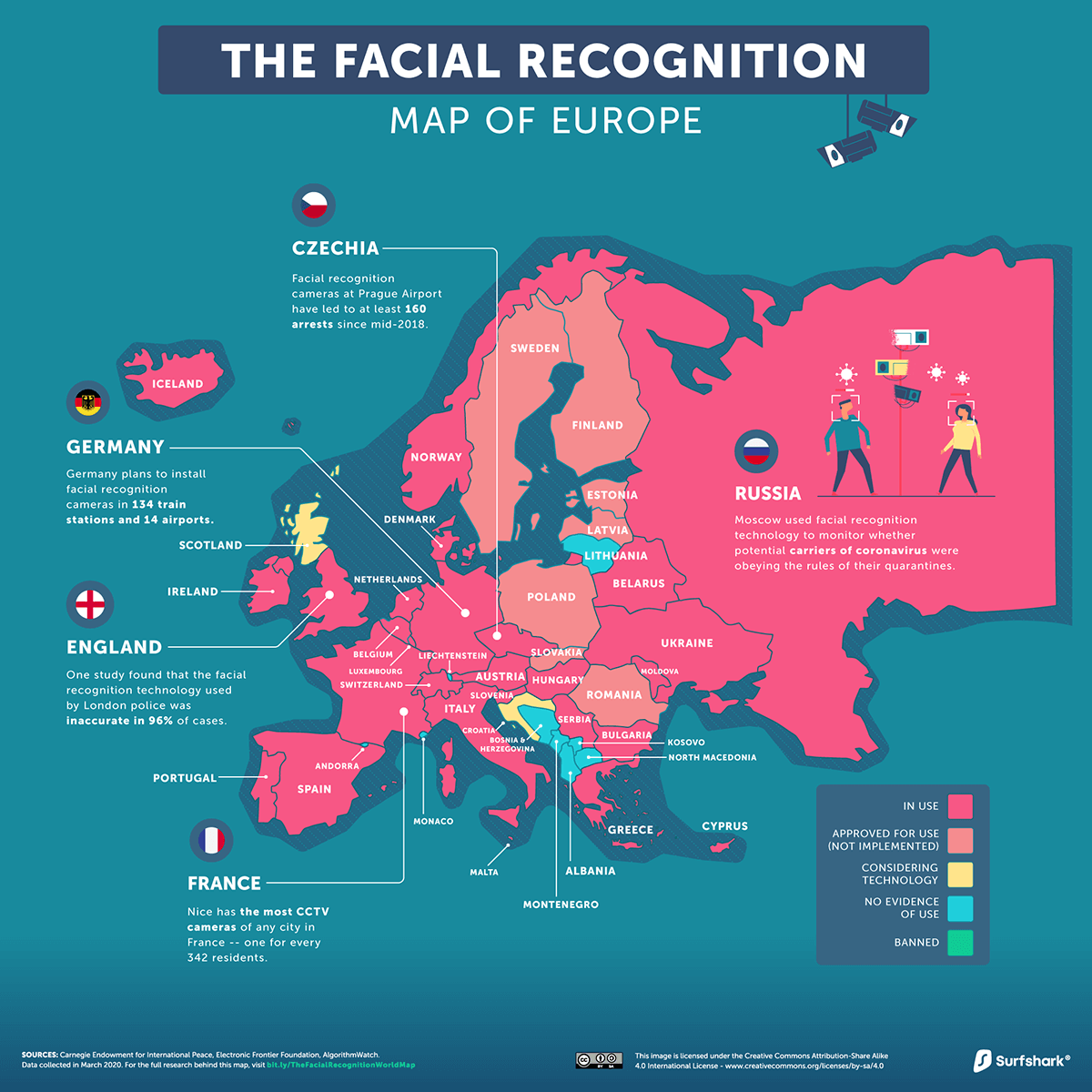
North America
Half of the countries in North America are currently using facial recognition surveillance. The Bahamas recently used facial recognition technology to search for missing persons in the wake of Hurricane Dorian, and more than 50% of Americans are currently in police databases. The U.S. Department of Homeland Security expects to conduct facial recognition scans on 97% of all air travelers by 2023.
Facial recognition technology is used or has been approved for use in two dozen U.S. airports, and is in use by more than 30 state and local police departments. At the same time, a growing number of U.S. cities are fighting to ban the technology. In May 2019, San Francisco became the first city in the country to ban facial recognition technology outright. Since then, several other cities -- including Oakland and Northampton -- have voted to ban the technology.
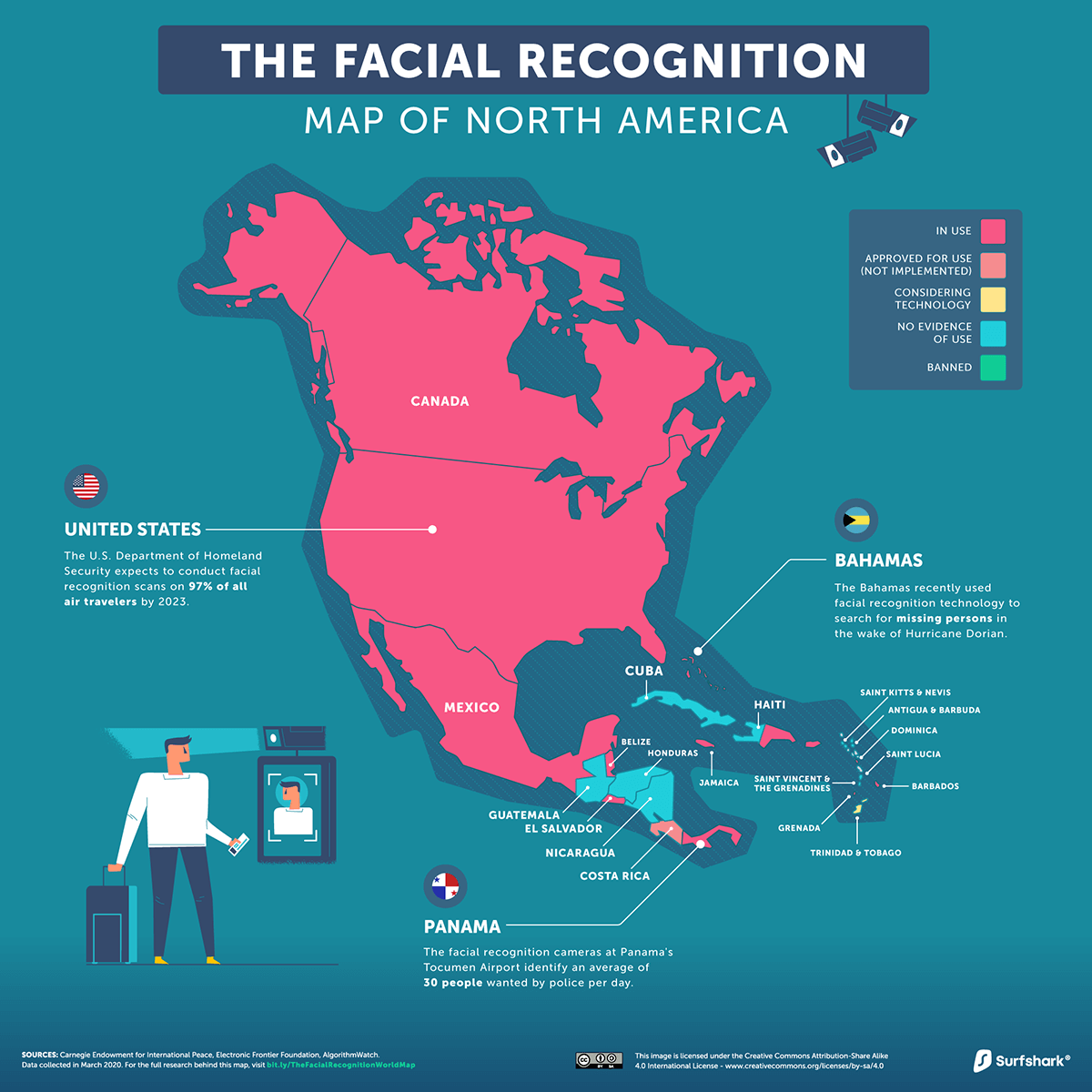
South America
Facial recognition technology in South America has been embraced by police departments to strong effect. In Argentina, facial recognition technology helped police make 590 positive identifications in just six weeks in 2019. In the same year, facial recognition feeds from just 16 cameras in Brazil were used to make 134 arrests during Carnival.
Facial recognition also helped Brazilian police arrest Interpol’s second most-wanted person in South America. Facial recognition technology is currently in use in 92% of South American countries, the largest share of any continent.
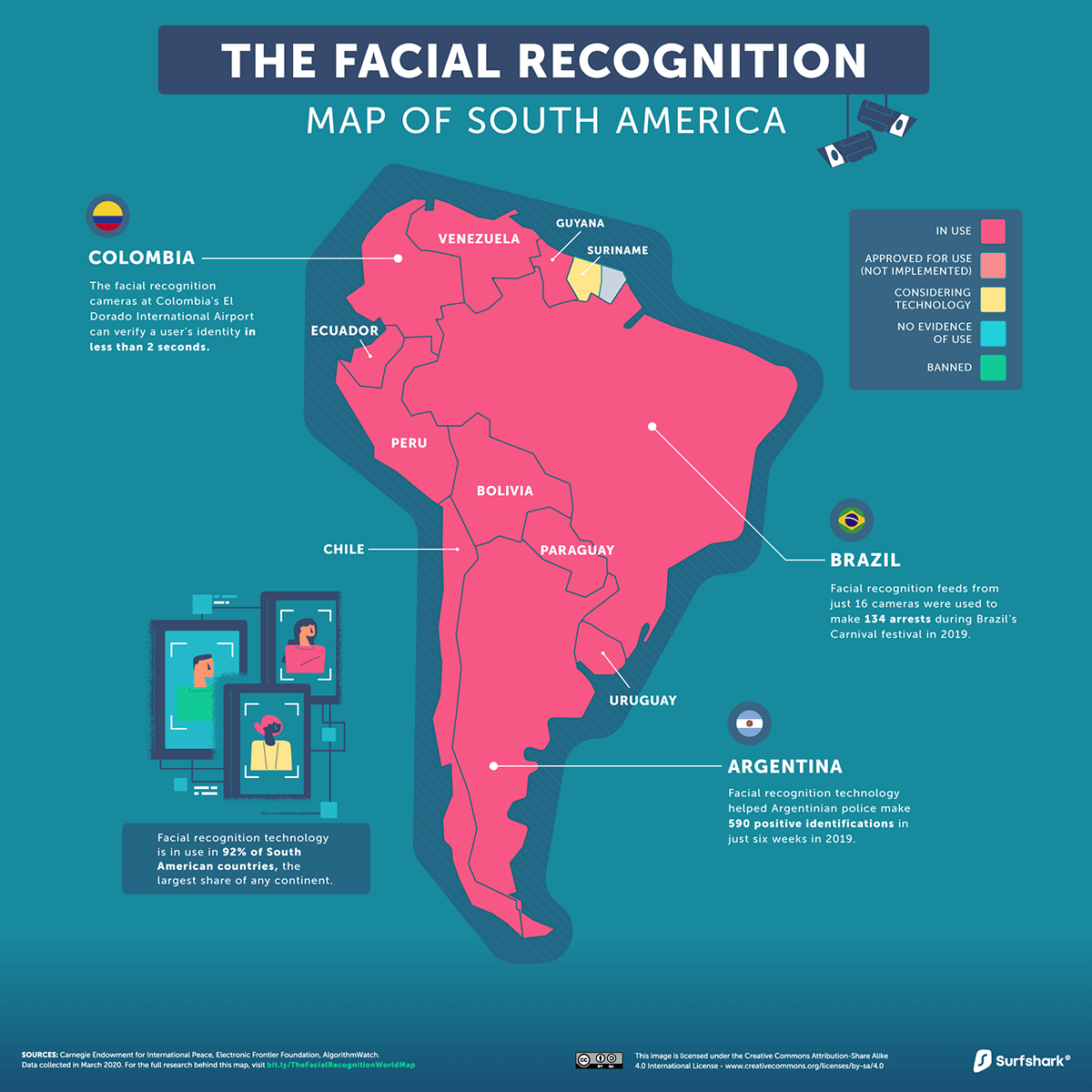
Middle East & Central Asia
Several countries in the Middle East and Central Asia are notable for their novel uses of facial recognition technology. Police in UAE, for example, recently purchased a set of 50 “smart glasses” enabled with facial recognition technology that will allow users to identify faces in a crowd. In Kazakhstan police use the technology to identify wanted persons but many cities in the country are currently testing facial recognition technology that will replace the ticketing system on public transportation.
Facial recognition technology is currently in use in 76% of countries in the Middle East and Central Asia, the second-largest share of any region.
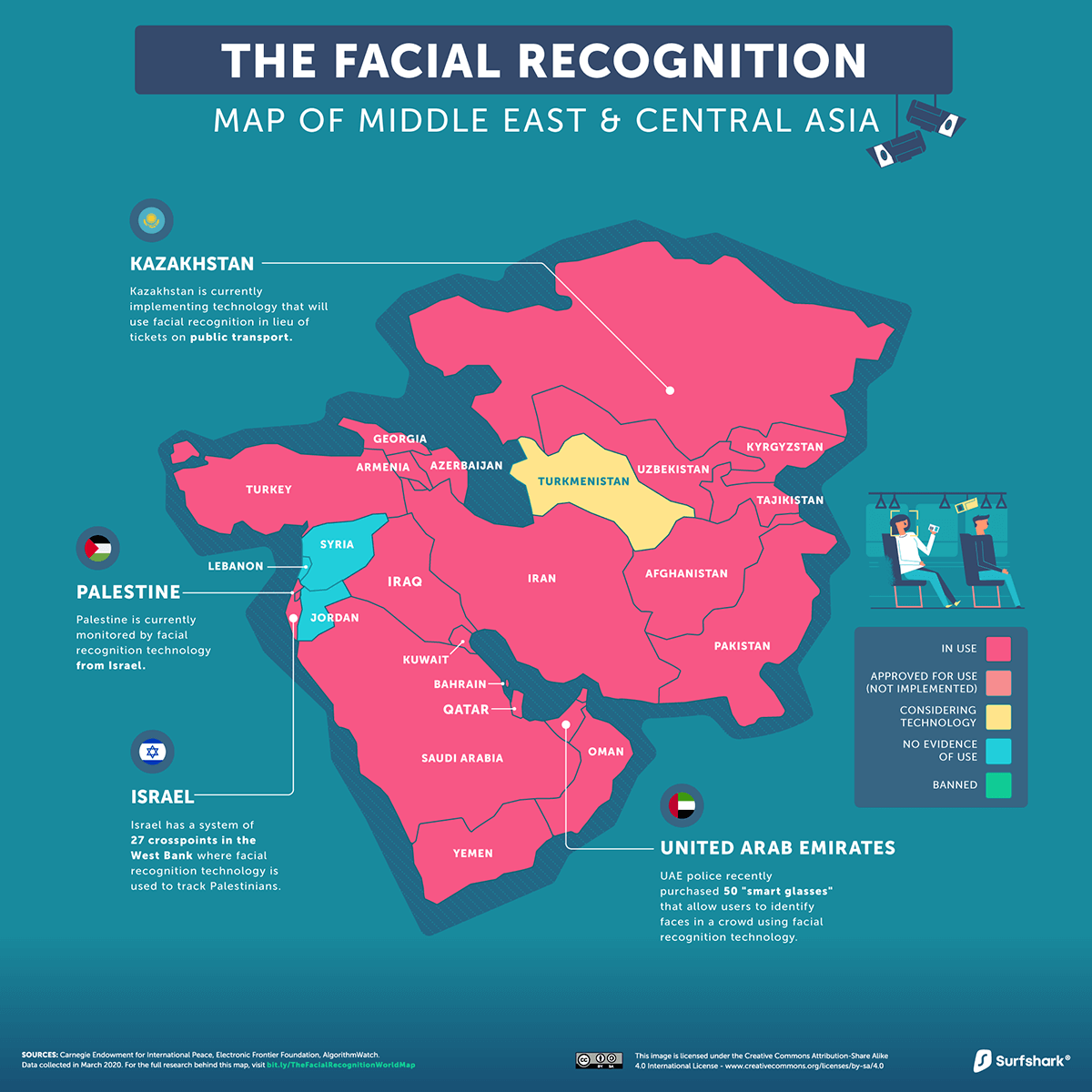
Rest of Asia and Oceania
China is both a leading adopter of surveillance technology -- there is approximately one CCTV camera for every 12 citizens nationwide -- and a leading purveyor of facial recognition hardware worldwide. To date, China has sold or given facial recognition technology to at least 16 countries outside of Southeast Asia and is projected to account for roughly 45% of the world’s facial recognition market by 2023.
Other countries in the region are pioneering new and innovative uses of facial recognition surveillance -- for better or worse. The Japanese government is planning to ask casinos to implement facial recognition technology to help restrict gambling addicts from placing excessive bets. Australia is currently developing a system that will use facial recognition to verify the ages of people seeking to watch pornography online.
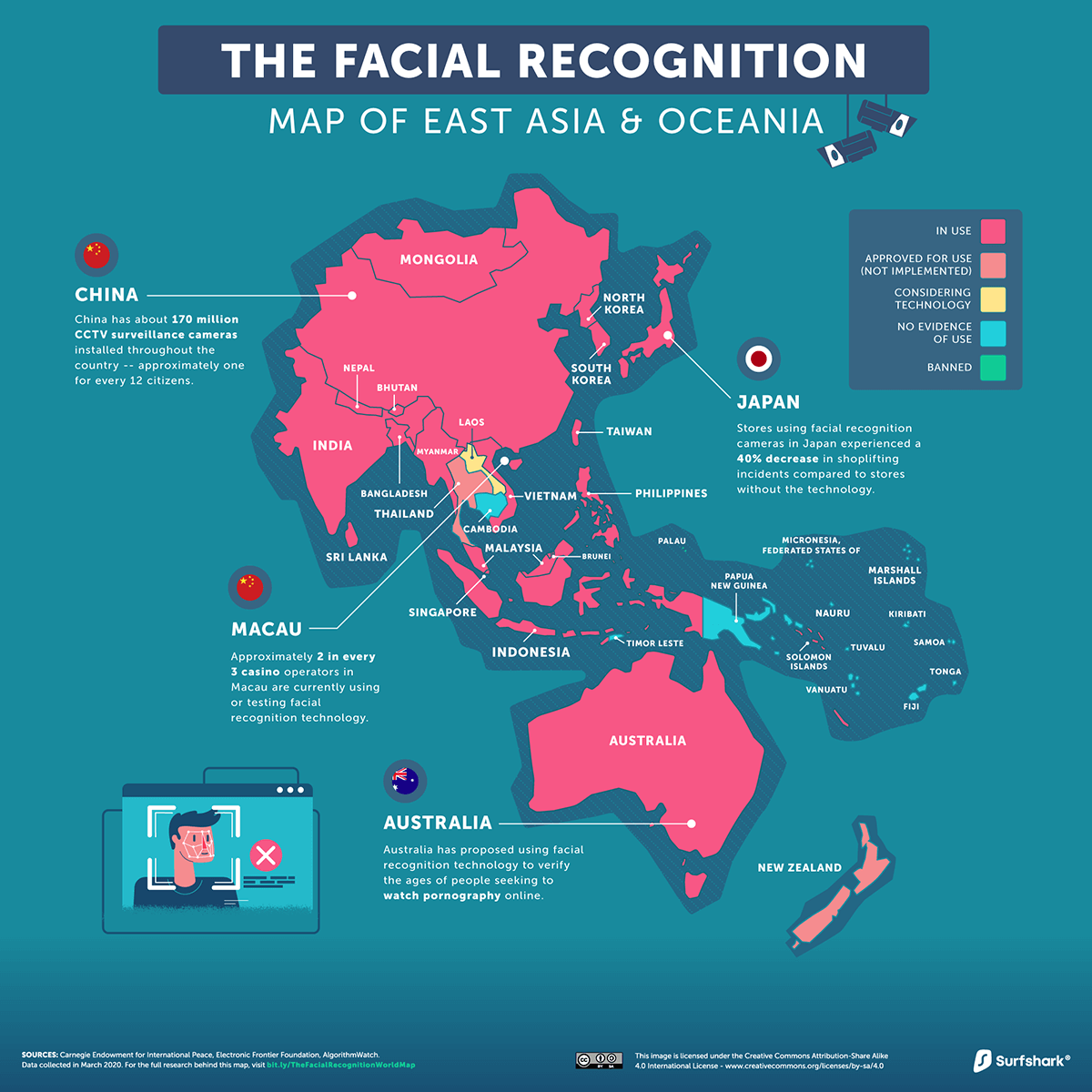
Africa
While facial recognition technology is in use in just 20% of African countries -- the smallest share of any continent -- that figure is likely to increase in the near future. A handful of African countries have purchased or received facial recognition surveillance tools from China, and 13% of African nations are currently considering the technology.
In one revealing example, Chinese tech giant Cloudwalk agreed to export facial recognition technology to Zimbabwe in exchange for biometric data that will help train the software towards darker skin tones. According to a recent report from the Carnegie Endowment for International Peace, at least 12 African countries are currently in possession of Chinese surveillance technology.
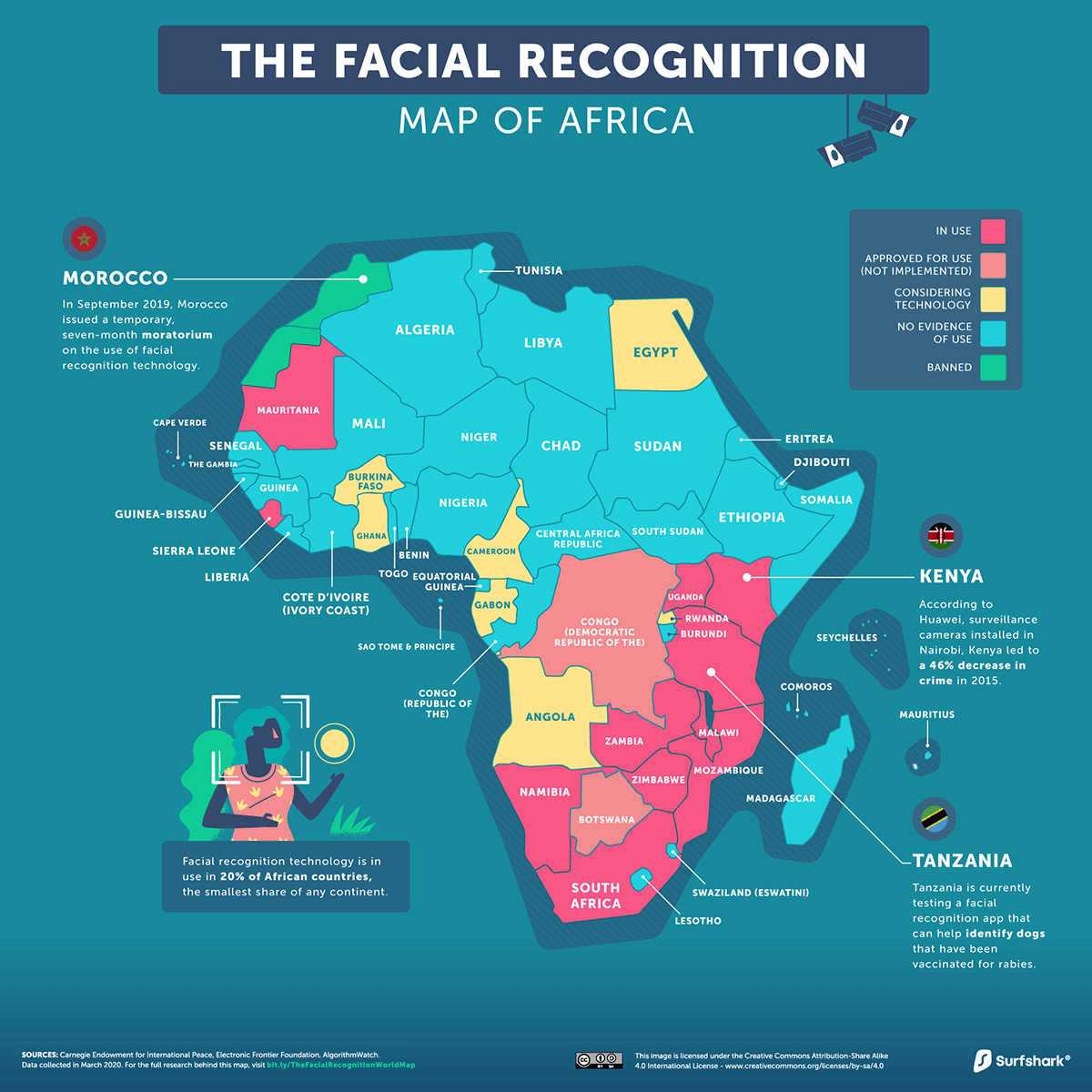
Facial recognition continues to spread, between the United States and China alone, the faces of more than 1.5 billion adults are currently in facial recognition databases. The technology is getting more accurate -- a recent survey found that identification error rates throughout the industry improved by an average of 2,000% from 2014 to 2018 -- and with those improvements come greater threats to privacy and personal freedom. So next time you are at the airport, a sports arena, or just walking down the street, smile -- you may be on camera!
Take ahold of your internet privacy
As a company offering privacy protection solutions, we are keen on keeping the public in the loop of all the ways their privacy is being compromised. VPN (Virtual Private Network), a software that hides your IP address and encrypts the data you send over the internet. This way, your browsing habits are hidden from your ISP (Internet Service Provider), the government, or anyone else snooping on you through an unprotected network.
The Data
Methodology & Sources
To create these maps, we reviewed the use and legal status of facial recognition in 194 countries and territories using a variety of sources. Countries were assigned a status of “in use” if there exists evidence of the government using facial recognition technology in some surveillance or public security capacity. Countries that had approved the use of facial recognition technology but have yet to implement it were assigned the status of “approved for use (not implemented).” Countries in which there is currently an active debate about the use or legality of facial recognition technology were assigned a status of “considering technology.” Countries that have either declared the use of facial recognition surveillance technology illegal or have made clear their intentions not to use it were assigned the status of “banned.” Countries in which there is no evidence of the use of facial recognition technology for surveillance or public security purposes were given the status “no evidence of use.” Only one country, Palestine -- where the government of Israel is using facial recognition technology to monitor Palestinians in the West Bank -- did not fit these categories.
Common uses include facial recognition technology in public CCTV, police use of facial recognition technology in internal databases, and facial recognition technology as a component of ID verification for elections or airport security.
For the full research behind this map, visit bit.ly/TheFacialRecognitionWorldMap